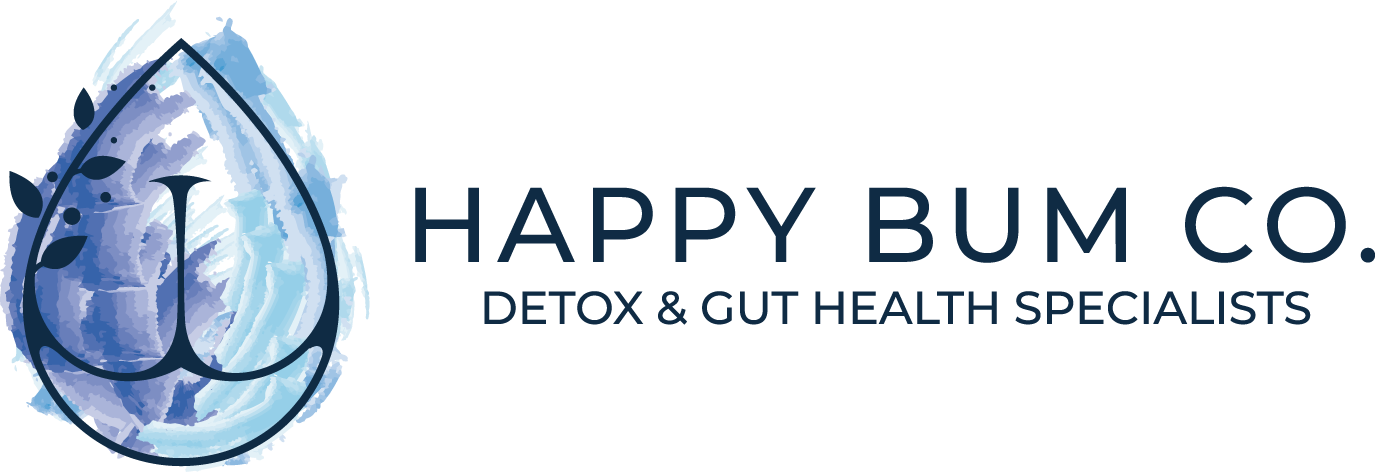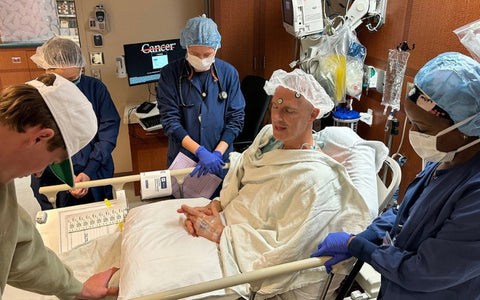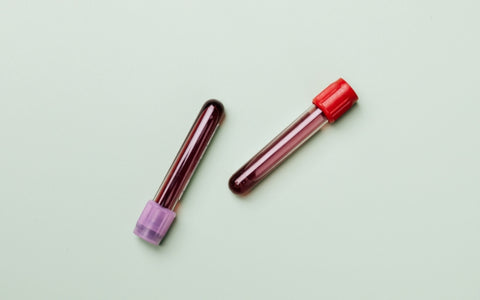I’ve been practicing for nearly 23 years and have worked with patients from all over the world. People come to me because I specialize in understanding the physiology of stress and how it affects health. When life’s demands overwhelm you, stress can make you vulnerable, creating the perfect breeding ground for chronic illness.
Over the years, I’ve treated patients with cancer, digestive issues, and autoimmune diseases from all corners of the globe — but I never imagined that I would one day find myself becoming the patient.
Looking back, about 18 months before my diagnosis, I noticed changes.
Even during virtual consults, I was struggling to articulate my thoughts. My mind would freeze unexpectedly, leaving me feeling frustrated and unsure. I assumed it was just brain fog, perhaps even long COVID. But two weeks before my diagnosis, things escalated. I began dropping objects, bumping into things, and even noticed that simple activities, like playing catch with my boys, had become challenging. Tossing a ball just 10 feet away would veer off course.
As my symptoms worsened, I lost the ability to write during consults. My brother urged me to visit the emergency room. I thought I had had a mini-stroke.
On Monday, I went to the emergency room. After a CT scan, the doctor revealed something concerning on the brain scan and recommended an MRI. Eight hours later, the diagnosis came in — glioblastoma.
A tumor the size of a tennis ball.

The next thing I learned was that I would need surgery — and that it was terminal. The prognosis was 12 to 18 months to live.
I asked the doctor, “Where would you go if this were your family?” and he recommended MD Anderson.
That day, I went home and began coffee enemas — a practice my wife had been using for years. I had teased her about it in the past, but here I was, embracing it fully. I did three coffee enemas daily until my surgery, which was scheduled two weeks later.
At 8 AM on December 11th, I underwent surgery. By 5 PM, I was out, and within 48 hours, I was discharged — much sooner than anyone had expected. The surgeon had predicted five days in the ICU, followed by 10 to 15 days in the hospital due to possible motor and speech complications. But I defied the odds and returned home.
No medications, other than a few painkillers.
For the next four months, I followed my ‘Be Resilient’ protocol, including daily coffee enemas.
During my next brain scan, my neurosurgeon, oncologist, and medical doctor shared the news: my brain was normal, with no signs of cancer. I was in complete remission. They called me a miracle.
Since then, I’ve continued with two coffee enemas daily, as they’re an incredible tool for liver detoxification and opening detox pathways. Coffee enemas have become a cornerstone of my wellness recommendations — not just for those with cancer, but for chronic illness, digestive issues, and even detoxing after MRIs, CT scans, or X-rays. They’re powerful for removing mercury, cadmium, and other toxins from the body.
Now, my mission is to empower others.
Regardless of how you approach cancer — whether through chemotherapy, radiation, or natural remedies — I believe we can support the body in profound ways. For me, detoxification begins with coffee enemas, and they remain a vital part of my protocol to this day.
I’ve compiled everything I’ve done in my cancer treatment, including supplements and my detox protocol, to share with others. Coffee enemas have been transformative for me, and I unapologetically love them.

When I talk to people, many say, “I don’t know, Dr. Pete, I think that’s too much.” But when you delve into the research, particularly what Max Gerson uncovered, it has been nothing short of a blessing for me.
By cleansing your system, the body can absorb nutrients the way it’s designed to. I believe the body wasn’t created as junk — it was created to function optimally.
If you provide the sufficiency the body needs at a cellular level, open up detoxification pathways, and give the body a fighting chance, you’re setting it up to thrive. No matter how you approach health, this foundational principle holds true.
Part of my protocol includes monitoring my ketones and staying in ketosis as much as possible. I incorporate MCT oil, wild-caught salmon, and steamed vegetables like broccoli, asparagus, and Brussels sprouts — all powerful detoxifiers. I stay hydrated with electrolytes and use supplements I detail in my Resilience Protocol.
My approach to cancer is rooted in the understanding that it’s a metabolic disease caused by mitochondrial dysfunction. I’ve compiled resources, including book recommendations and summaries, supplements, and various modalities such as the hyperbaric chamber, ozone sauna, and high-dose vitamin C therapy.
Our bodies are designed to heal through homeostasis — a state of balance and equilibrium.
Every day, my body adjusts to the physical, chemical, emotional, and spiritual stressors placed on it. However, recovery is essential. When the body becomes overwhelmed, it reaches a tipping point known as allostatic load, a state where it can no longer return to homeostasis.
At this point of allostatic load, a body that is fearfully and wonderfully made can become chaotic and inefficient. Essential functions like heart rate, blood pressure, stroke volume, and blood sugar levels increase, while non-essential processes, such as digestion, immune function, reproduction, and growth hormone production, are suppressed. After all, reproduction isn’t a priority when you’re metaphorically running from a tiger, right?
Ultimately, we want to bring the body back into balance. When stuck in allostatic load, the body begins to suffer at a cellular level. The cell membranes become rigid, trapping toxins inside and preventing essential nutrients from entering. This impacts the mitochondria — the cell’s powerhouse — leading to depleted energy, heightened inflammation, free radicals, and oxidative stress, all of which can ultimately contribute to cancer.
To address this, we must first lay a foundation to restore homeostasis — and it can often be achieved through simple steps. For instance, I focus on restoring homeostasis neurologically and physically through movement. Exercise and spinal mobility are crucial. Nobel Prize winner Dr. Roger Sperry once said that spinal mobility is the greatest nutrient for the brain because it neurologically helps to bring the body back into balance.
Homeostasis can also be restored chemically with apoptogenic herbs like ashwagandha and holy basil (tulsi). These herbs support the HPA axis, the pathway responsible for producing the stress hormone cortisol. While cortisol is essential for waking up in the morning, providing energy throughout the day, and acting as a protective mechanism, excessive or prolonged cortisol production wreaks havoc on the body. Psychology Today even calls cortisol “public enemy number one,” associating it with weight gain, aging, fatigue, and sickness.
Adaptogens are unique because they act like a thermostat, unlike medications or supplements that work as either stimulants or depressants. Adaptogens adjust based on the body’s needs, helping to restore chemical balance and create resilience.
Emotionally, the body often gets stuck in stress due to trauma or other factors. To break free from this, hope becomes a powerful tool. A positive outlook and a shift in perspective can create a ripple effect that restores emotional homeostasis. Scientific studies confirm that cultivating hope positively impacts the body and mind, promoting balance.
The key is to help the body adapt and recover physically, chemically, and emotionally to build true resilience. I always say: I’d rather be at death’s door and moving in the right direction than feeling fine while unknowingly heading down the wrong path. Many people mistakenly equate feeling good with being healthy, but they’re often on a dangerous trajectory.
So how do we bring the body back into balance? It starts with providing the body with what it needs — sufficiency through good nutrition and supplementation. We must also remove toxicity by opening detoxification pathways. I emphasize tools like coffee enemas, milk thistle, sauna sessions, sweating, regular exercise, and staying hydrated. When we add sufficiency and remove toxicity, the body has the opportunity to thrive.
I meet many people, especially women in their mid-forties, who tell me their hormones are changing, and they don’t feel good. Others come to me after being newly diagnosed with cancer or after struggling through treatments like chemotherapy and radiation that haven’t yielded results. These individuals are often desperate for guidance. Many of them share tearfully that they didn’t know where to turn until they stumbled across my work online. They express immense gratitude, and I feel honored to help them on their journey toward healing.
Thank you for reading my story.
Dr Pete Sulack






